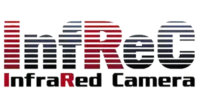What Does a Thermal Imaging Device Detect? A thermal imaging device, such as a thermal imager or infrared imager, detects the infrared radiation or heat emitted by objects. Based on these detections, it creates a ‘thermal profile’ or heat map of the area in focus.
A thermal imaging camera (colloquially known as a TIC) is a type of the thermographic camera used in firefighting. By rendering infrared radiation as visible light, such cameras allow firefighters to see areas of heat through smoke, darkness, or heat-permeable barriers.
Higher resolution thermal imaging not only provides more accurate quantitative results, it can be very effective in showing findings in finer detail to customers, supervisors, repair crews, and insurance companies which can help move along the decision-making process for improvements and repairs.
The scanner bounces waves off your body surface which then go back to the machine for processing. The level of radiation you’re exposed to during this process is lower than what is given off from your phone. At these very low levels, exposure is considered safe for everyone, including pregnant women.
The quality and composition of a digital camera is mainly defined by four quantities: resolution, lens aperture, lens focal length / zoom range, lens quality, sensor sensitivity, and camera software.
- Temperature range / value to be measured.
- Spectral range.
- Sensitivity (NETD).
- Resolution.
- Optics / Field of View (FOV).
- Focus.
- Ambient temperature and environment.

Despite its usefulness, thermal imaging has some drawbacks: It cannot see through walls, glass, or water, as these materials block infrared rays. Environmental factors like rain, fog, smoke, and high humidity can reduce image clarity and accuracy
The emissivity settings on a thermal imaging camera can ensure accurate readings. This setting is typically used to improve the accuracy of surface temperature measurement as the wrong setting could give wrong readings. For non-reflective painted surfaces and non-metals, emissivity is generally 0.95.
They usually have a range of about 100 to 200 feet, enough to capture thermal images of a room or a small building. For instance, a popular model from Brand A might have a detection range of up to 150 feet, which is more than adequate for most home applications.






